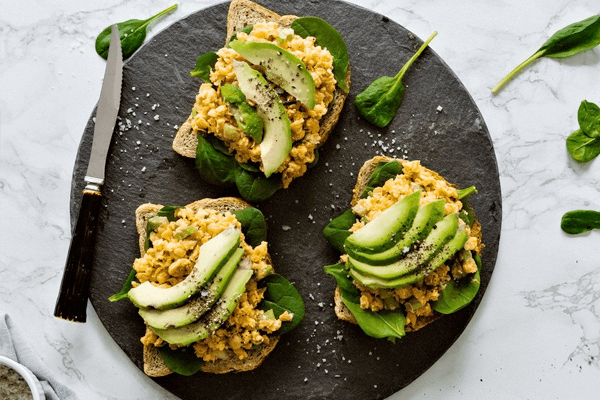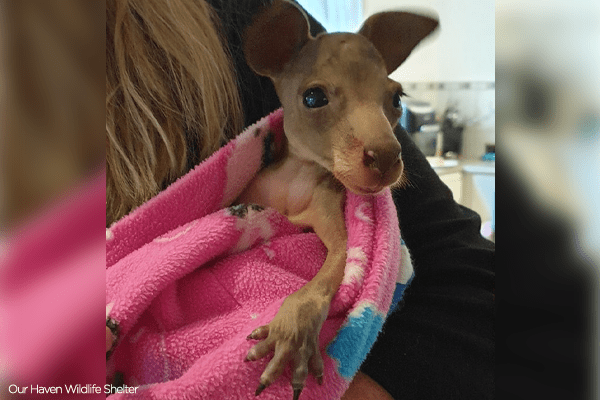
All About Kangaroo
About kangaroos
Kangaroos are conscious beings, like us, who have the ability to perceive and experience a range of emotions [1]. This includes negative sensations such as fear and event post-traumatic stress disorder (PTSD) [2]. One of the key instigators of PTSD in kangaroos is cited as recreational hunting and commercial slaughter [3]. These researchers ultimately found that “strong one-on-one carer engagement and input, having a kangaroo soul-mate and the judicious use of calmative medication will aid recovery from PTSD”. This is because “kangaroos have strong social bonds within their mob, and therefore, attachment is a significant part of their psychological make-up” [4]. They also mourn their friends and family [5].
Incredibly, the kangaroo has developed a biological adaptation to the often harsh Australian environment. During periods of drought, females lose the ability to conceive and produce offspring [6]. This challenges the argument that unless “controlled”, kangaroo populations will balloon into unsustainable numbers.
The kangaroo sits pride of place beside the emu on the Commonwealth’s coat of arms, indicating their fame as one of the most well-known and widely recognised of Australia’s native animals. Yet, the coordinated killing of kangaroos began “at exactly the same time” that kangaroos were first identified by invading colonists [7]. Soon, they were formally classified as a “pest” species, a “type of vermin to be destroyed en masse” [8].
The industry
The kangaroo meat for sale on supermarket shelves or restaurant menus is taken from kangaroos who are killed in the wild [9]. In the last three decades, almost 90 million kangaroos and wallabies have been killed for their flesh and fibres [10].
Canada’s annual slaughter of Harp seals is seen as the only competitor for Australia’s commercial kangaroo industry, in terms of the enormous scale of killing undertaken. Kangaroo slaughter, however, receives significantly less international condemnation and the killing is shrouded in layers of state-sponsored propaganda [11].
In Australia, most land is cleared for cow and sheep grazing – yet, the native animals are called ‘pests’, for simply trying to survive [12].
When a female kangaroo is shot during a commercial operation, it is a mandated requirement for any dependent joeys to be “euthanised” to “reduce joey suffering”. Depending on the size of the joey, they are usually killed by decapitation, cervical dislocation, or if furred, a blow to the head, such as blunt force trauma [13, 14]. If they are not killed, it is highly likely they will die of starvation, exposure, or predation [15].
The scale and ferocity of the 2019-2020 Australian bushfires, which took the lives of over 3 billion animals, and placed many Australian species at risk of extinction [16, 17, 18], were influenced by climate change. Many would have presumed that the commercial killing of kangaroos would halt under a temporary moratorium, however, it didn’t. The surviving kangaroos continue to be commercially killed in the largest government-sanctioned slaughter program currently underway anywhere in the world [19, 20, 21].
The environment
Much of the literature available on kangaroos and the environment focuses exclusively on their allegedly negative impacts. Yet, when the argument is convenient to use, the government and kangaroo killing enthusiasts concede that “they [kangaroos] don’t damage the land” [22]. The literature fails to acknowledge the fact that a network of functional microbial, fungal, plant, and animal groups are vital to maintaining a healthy ecosystem [23]. Macropods play an important role in promoting regeneration of native plants and reducing the fuel load in forests and grasslands [24]. Kangaroos are a native animal, who have lived and thrived in Australia for thousands of years.
Our health
In 2013, researchers found that a compound present in all red meat is actually highest in kangaroo flesh. This compound, L-carnitine, is tied to the creation of arterial plaque. The same year as L-carnitine was first found in kangaroo meat, a Harvard study revealed that L-carnitine is positively associated with higher rates of heart disease, including cardiovascular disease, heart attacks and strokes [25].
The kangaroo industry has consistently faced challenges based on poor hygiene and threats to human health. Dangerous levels of salmonella and E. coli have been regularly found in kangaroo meat intended for human consumption and have led to criticisms from public health officials that the industry is “failing to adhere” to Australian standards [26].

Vegan Protein Recipes
People tend to eat meat because it is marketed as being high in protein and contains other essential nutrients. Meat, however, isn’t the only food that has protein and you can easily hit your protein needs on a vegan diet! Here are a few of our favourite protein-packed breakfast, lunch, dinner, and snack recipes, all of which are animal-friendly and full of other essential nutrients.
Breakfast
19g protein
Beyond Mere Sustenance – Breakfast Burritos
20g protein
Well and Full – Breakfast Quinoa
21g protein
Delight-Fuel – Protein Pancakes
22g protein
The Minimalist Baker – Tofu Omelet
22g protein
The Minimalist Baker – Breakfast Burritos
23.7g protein
The Glowing Fridge – Peanut Butter Chia Overnight Oats
25.1g protein
Lazy Cat Kitchen – Chickpea Toast
30g protein
Lunch
The Simple Green – Smoky Chickpea ‘Tuna’ Salad
15g protein
86 Lemons – Quinoa, Corn, and Edamame Salad
16g protein per cup
Vegan Lemon Fettuccine Alfredo
22g protein
The Minimalist Baker – Satay Tofu Salad
23.3g protein
The Spruce Eats – White Bean Salad
33g protein
Dinner
Well Plated – Black Bean Burger
14g protein
The Minimalist Baker – Spanish Quinoa Stuffed Peppers
14.4g protein
Emilie Eats – Black Bean Buddha Bowl
20g protein
Carrots and Flowers – High Protein Fiesta Salad
35 g protein
Snacks
Trail Mix – mixed almonds, pistachios, cashews, hazelnuts, peanuts, Brazil nuts, walnuts, sunflower seeds, and pumpkin seeds.
8g protein (2tps PB)
V Nutrition and Wellness – Cookie Dough Protein Balls
3.6g protein per ball
Food Faith Fitness – Protein Muffins with Chai and Vanilla
5g protein
Hummusapien – No-Bake Cherry Vanilla Protein Bars
5g protein per bar
5g protein
Worried about other nutrients?
Eating animals doesn’t guarantee that you’ll hit all of your essential nutrients. Eating a whole-foods, plant-based vegan diet will make it easier than ever before to hit all of your essential nutrients everyday. We’ve put together some a list of where you can get some of the most important nutrients from, here.
We also recommend downloading Dr Michael Gregers, Daily Dozen app. It can help you stay on track and make sure you are eating a range of foods every day.
Please note, we are not nutritionists. If you would like more advice we can help you find a nutritionist!

How to Help Wildlife
Did you know that there are over 20,000 volunteer wildlife carers in Australia? These compassionate people take in injured, sick, and orphaned animals, caring for and rehabilitating them until they are well enough to be released into the wild. They feed them, give them full vet care, keep them comfortable, and let them have space. While the thought of being surrounded by baby animals may seem fun, carers are exposed to an immense amount of suffering and are prone to emotional distress, grief, burnout, and compassion fatigue.
A recent survey found that carers physical workload is on average 32 hours a week, but can be over 100. Almost all rely on donations from other kind people, receiving no government funding. Over 65% of volunteers felt that government agencies neglected the animals [x PDF].
One of the most heartbreaking truths is that while carers are putting in an immense amount of love, care, and money into caring for these animals, millions of other kangaroos are legally being hunted down. In fact, the commercial and recreational hunting industry is one of the reasons why so many joeys end up in the care of wildlife rescuers. Joeys flee after their mothers have been shot and are left vulnerable and alone. Another common reason is due to vehicle collisions. On top of this, once they are released they may be at risk of being shot by hunters, depending on their location.
We want to raise awareness about some of the amazing groups, who are trying to make the world a more compassionate place for macropods.
You can help Australian wildlife by:
Not supporting the kangaroo industry
Taking extra care on the road (especially at dusk and dawn!) and get a car whistle
Keeping a rescue kit in your car (click here for what to include).
Donating to one of the amazing rescue organisations.








